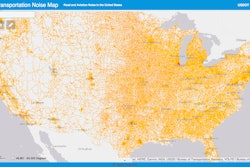 Photo credit: Smallman12q via Wikimedia Commons
Photo credit: Smallman12q via Wikimedia CommonsThe Oregon Department of Transportation (ODOT) has released two reports that review the state’s current investment in transportation projects, and how that will impact road and bridge conditions and the state’s economy.
“We’ve known all along how important our transportation system is to the state’s economy and the quality of life we enjoy in Oregon, and these reports spell it out for us,” says Oregon Transportation Commission Chair Tammy Baney. “It’s clear that we need to pay now—or we’ll pay a whole lot more later.”
One of the reports, the Rough Roads Ahead 2 report, shows that more than half of Oregon’s 2,736 state highway bridges were built before 1970. ODOT says most of these bridges have reached or exceeded their 50-year design life and were not built to withstand a major seismic event and require replacement or major repair in the near future. Close to one-third of state highway bridges are expected to be in poor condition by 2036, with 370 bridges projected to be weight restricted.
The economic impact of deteriorated bridges that force truck detours, the report indicates, could be a loss of $150 billion in gross domestic product and 75,000 fewer jobs.
“When we have to reduce the amount of weight a bridge can handle because it no longer functions, the impact is multiplied,” says ODOT Director Matt Garrett. “Trucks get detoured off state highways, increasing the cost of doing business, and local roads get used more and their conditions deteriorate.”
The Pavement Conditions report shows that without additional investment, close to half of the pavements on the state’s 8,032 miles of state highways will be in poor condition. The report finds the typical cost to preserve pavement is roughly $200,000 per lane mile, with reconstruction for the same distance being up to $1.5 million.
At current funding levels and over 20 years, the state would need to spend between $4 billion and $5.5 billion to put roads back into today’s condition. This would be up to twice as much as the $2.6 billion estimated in additional funding currently to preserve the roads in good condition.
“As the state’s pavement deteriorates, vehicle repair and operating costs will increase,” ODOT reports. “Rough pavement increases vehicle user costs: fuel efficiency drops, while tire wear, oil use and repair costs rise. With rougher pavement in the future, Oregonians will have to spend an additional $300 million on vehicle repairs and maintenance per year.”
More details and the full reports are available at the Rough Roads/Pavement Reports website.












